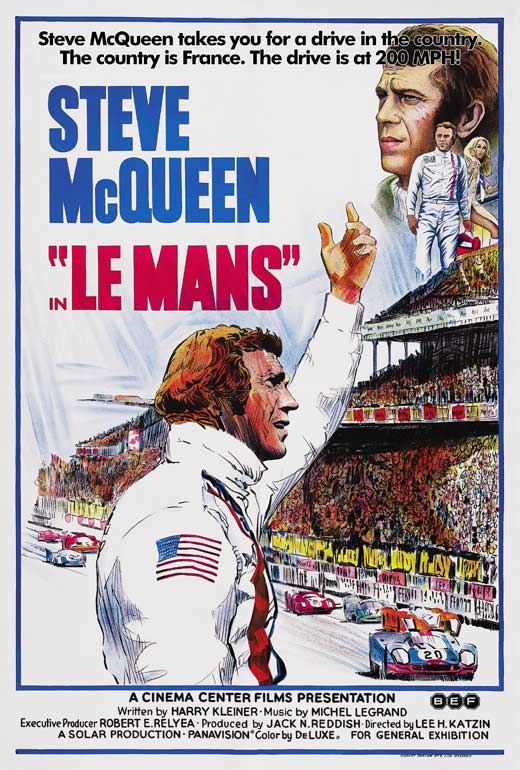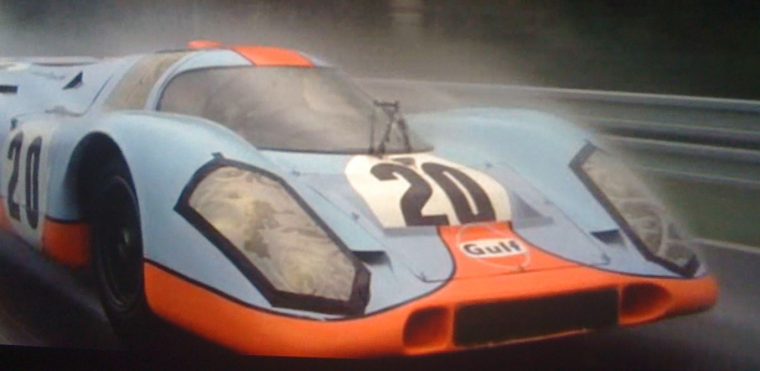Classic Car Cinema: Revisiting Steve McQueen’s ‘Le Mans’ Film
Back in the mid-twentieth century, now-legendary influencers in Hollywood were pushing the boundaries of and redefining cinema. One of the names still held in high regard–particularly within the automotive and racing industries–is Steve McQueen. Known as “The King of Cool,” he was rebellious, brash, and risk-taking.
While many of his films went on to be box office hits and instant classics, one of his biggest flops was a semi-fictional piece he and director Lee H. Katzin did on 24 Hours of Le Mans. While the film Le Mans was initially rejected by audiences and critics, it’s earned regard among racing historians.
So does Steve McQueens’ Le Mans fare better with a viewing 45 years later? Or is it still a dream running on fumes?
Review of Le Mans (1971) Film Starring Steve McQueen
For me–and any other first-time viewer of Le Mans–what’s initially striking is the pervasive lack of dialogue throughout the 106-minute running time. Only a handful of actual conversations take place on screen, and they do little to develop the characters or further the plot.
In fact, there’s very little story taking place on screen. In general, Le Mans depicts a 24 Hours of Le Mans race involving Michael Delaney (Steve McQueen) as he participates while faced with the presence of the widow of a driver who died the previous year. That’s pretty much it.
The lack of dialogue and major characters–with a heavy emphasis on the details of the crowds, cars, and driving–make Le Mans feel more like a documentary than a fictional account. Though, considering much of the racing footage was filmed the previous year at an actual Le Mans race, it’s not surprising. It’s no wonder the film has gained global appeal with its bare-bones dubbing needs.
What frustrated most viewers at the time–and, admittedly me– is the near-total lack of plot or dialogue.
It’s a full 28 minutes into the film before the first race happens, but hardly anything occurs in that opening half hour except an opening flashback. The anticipation is meant to build tension but just feels like lagging. The drivers getting dressed and spectators milling about is important for building context and setting, but that can be accomplished easily in 5 minutes instead of 25. The audience is an outsider that can’t even listen in on the conversations going on.
On the track, the cinematographers experiment with editing and camera angles but to little avail. Without a need to be invested, the audience–a crucial participant in the cinematic process–has little reason to remain engaged.
The only role the women play–particularly Belgetti’s widow–are just to react to dramatic announcements of accidents on the track. Multiple times, the same announcement and dramatic zoom on her face is used; it’s hardly convincing. Also, the cuts away from the accidents to depict horror via spectator expressions has not aged well; it feels like a parody and does a disservice to the stunts.
The characters are undefined and unsympathetic, the line delivery is weak, and the conversations have no context. In general, while Le Mans may be an accomplishment in technical filmmaking, as a narrative it’s detached, disjointed, and inconsequential. Save your time and watch a real race–or read the graphic novel.
Final Rating: 
Aaron is unashamed to be a native Clevelander and the proud driver of a Hyundai Veloster Turbo (which recently replaced his 1995 Saturn SC-2). He gleefully utilizes his background in theater, literature, and communication to dramatically recite his own articles to nearby youth. Mr. Widmar happily resides in Dayton, Ohio with his magnificent wife, Vicki, but is often on the road with her exploring new destinations. Aaron has high aspirations for his writing career but often gets distracted pondering the profound nature of the human condition and forgets what he was writing… See more articles by Aaron.





